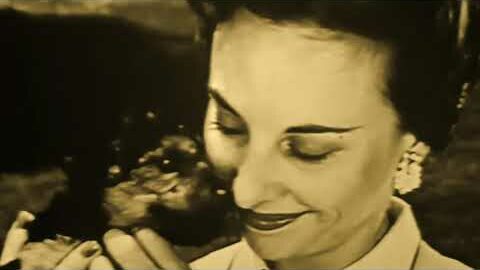“My whole life has been ruined by this franchise,” quips producer Craig Perry. “I can’t walk into a room without detailing how I might die.”
He might be joking, but in truth, Perry is the godfather of the Final Destination franchise. It stands to reason his extensive involvement in the series, from brainstorming elaborate set pieces to major script rewrites, would trickle into other facets of his life.
The first Final Destination starred Devon Sawa (as Alex Browning), Ali Later (Clear Rivers), Seann William Scott (Billy Hitchcock), Kerr Smith (Carter Horton), Amanda Detmer (Terri Chaney), Kristen Cloke (Valerie Lewton), and Tony Todd (Bludworth).
Released on March 17, 2000, Final Destination nudged out a $10 million opening weekend and went on to spawn four sequels and a forthcoming reboot/sequel currently in pre-production. The use of death itself as an unseen killer, discarding slasher tropes of a guy in a mask with a knife, was groundbreaking for its time. Since then, many have regarded the film as a distinct turning point for modern horror, paving the way for splatter and torture-porn films like Saw (2004), Hostel (2005), and High Tension (2003).
In celebration of its 20th anniversary, Consequence of Sound spoke with actors Amanda Detmer and Kerr Smith; screenwriter/creator Jeffrey Reddick; and producer Craig Perry, among others, about the film’s inception, key story beats, special makeup effects, behind-the-scenes logistics, and whether or not this film could have been made post-9/11.

Final Destination Film Premiere, photo courtesy of Craig Perry
CRAIG PERRY (PRODUCER): There were a whole host of movies that were very teeny bopper and completely disposable at the time. Some were self-referential and a bit snarky. That’s all good, but it started to diminish the genre. It was the return of the slasher. The thing that made Final Destination stand out and ultimately stand the test of time is that the slasher is an idea, a notion. It’s something beyond the world we’re in. It’s intangible. It calls upon the audience to bring to the table everything they think about fate, death, and life. It was slightly elevated. It makes people think a bit more than they would watching some guy with a hook cutting people up. You don’t walk out of the theatre thinking: Do I go left or right here, and what does that mean for my life?
JEFFREY REDDICK (CREATOR/SCREENWRITER): To be part of something that has had such an impact just on the horror genre itself is really exciting and humbling. It’s part of the public lexicon now. People can say, “Oh this is a Final Destination moment!”, and everybody knows what it means.
GEOFF REDKNAP (SPECIAL MAKEUP EFFECTS): Final Destination and Saw have a similar model in the concept. It obviously differs, but this film paved the way for this idea, in horror terminology, of complex stories. This film had a gimmick, but it wasn’t a crass horror film and just a gorefest. It was trying to be a thinking horror movie. There’s a bigger mystery at play than just a psycho killer.
KERR SMITH (ACTOR): 20 years later, when I get on a plane, I think of two things: 1.) I always think of the food tray lever breaking (and if it does, I’m getting off the plane), and 2.) the flight attendants are always saying “final destination” over the intercom.
DAVID MYLREA (ASSISTANT STUNT COORDINATOR): I had started off my career being a jockey because of my height and stature. I’d doubled for a lot of kids in my career. I’ve done a lot of costume work, too. I was approached on a race track by one of the people who knew one of the trainers. They wanted to know if I wanted to do a stunt for a film. I said sure. JJ Makaro [lead stunt coordinator] was called to do the stunt coordinating. I had been helping him for a few years coordinating and performing. We tag-teamed the film together.

Devon Sawa and Amanda Detmer, photo courtesy of Amanda Detmer
In the mid-’90s, Reddick was flying back home to Kentucky when he read a story in People Magazine, in which a mother experienced a premonition that her daughter’s flight was going to explode. That was the hook for the initial concept of what was then a TV spec script for The X-Files.
REDDICK: The story was about a woman who was on her honeymoon or on vacation. Her mom called her and told her, “Don’t take the flight you’re on tomorrow. I have a bad feeling about it.” And she changed her mind. That put the germ of the idea in my head. When I was trying to think about the beginning of an X-Files episode, I thought, Scully had a brother who was never seen on the show. It’d be cool to bring Scully’s brother into it, and he has this premonition. He gets off the plane, and people around him who got off with him start dying.
This germination started when I wanted to get a TV agent. They’re like, “Write something that’s popular on TV. Write a spec script.” I was going to send the script in, but one of my friends at New Line said, “This would make a great feature, dude. Don’t waste it on TV.” So, I never actually sent it in to The X-Files. James Wong and Glen Morgan worked on The X-Files, so it was this very serendipitous kind of thing. It took a long time. It was eight years of rejections on scripts before I sold something. It was certainly not an overnight thing. Once the ball got rolling with the film, they actually moved on it pretty quickly.

Final Destination (New Line Cinema)
Inspired to turn his TV spec script into a feature film, Reddick went to work on the treatment, which was originally called Flight 180. He eventually sold a final treatment to New Line in 1997.
REDDICK: We developed a treatment probably over the course of five or six months. We kept giving it to New Line and getting notes. In the original iteration of the story, they were all adults. Then, Scream came out, and teenagers were hot again in horror films. New Line wanted to make them all teenagers.
At first, it was going to be that they got off the plane and were getting knocked off one by one. The concept was that Alex wasn’t supposed to die in the crash. That’s why he had the premonition. Everybody else was supposed to die. I remember talking to Craig, and he said, “We need one extra thing in there to set it over the edge so that it’s not just a slasher movie with death.” I was home one night thinking about the plane explosion. I was thinking, Okay, if the plane crashed, everybody wouldn’t die at once. They’d die in a certain order. Then, I figured out this design idea.
Once the studio bought the treatment, they had me go straight to drafts. I wrote one draft. We’d worked so hard on it at that point. At the end of the day, it was very unusual not to have a physical killer in the movie. New Line was still not sure about it. Craig Perry said, “If you don’t pick this up, we’re going to take it to Miramax.” So, they bought it right up.
PERRY: I was in San Francisco for the weekend. Warren [Zide, another producer] faxed [Jeffrey’s spec] to the hotel I was staying in. We very quickly realized that all the merit that has supported the 20-year run of this franchise was evident in that core idea for a movie. Jeffrey and I took some time taking that three-page outline and expanding it to 15 pages. We wanted to get New Line to buy it, and we had to make sure we had the goods.

Kerr Smith and Amanda Detmer, photo courtesy of Amanda Detmer
In Reddick’s draft, the story borrowed strong elements from 1984’s Nightmare on Elm Street, a film of great personal significance, and the original script had a far more disturbing overtone.
REDDICK: In my draft, Alex’s best friend Tod rigged up a noose in his garage. He was a preacher’s son and stole stuff from his dad. He was calling his father on his car phone to say he was sorry. When the dad came home and opened the garage, he hung himself.
Carter jumps in front of a subway train and kills himself. There are remnants of the deaths in the film. In the script, he was still a jerk, but he felt really guilty after his girlfriend died. You saw this other side of him when he was grieving.
I had written a sister who stayed on the plane and a sister who got off the plane, which was changed to two brothers [Tod and his brother]. The sister who died in the plane crash was the straight A student. The other was the one always getting into trouble. Her sister started haunting her, and so she started dressing like her sister and acting like her sister. When she couldn’t be her sister, she set herself on fire.
There was another character who had attempted suicide before the plane crash. She started getting haunted by all the people who had died before her. She ended up killing herself.

Final Destination (New Line Cinema)
Terri was still dating Carter. But because he was so demanding of her, she was bulimic. She died earlier in my draft, and Carter was haunted by her. She shows up and torments him at a subway station, saying, “Do you know what I did to myself to look beautiful for you?” She starts puking her intestines out, which is an homage to Gates of Hell, an old Italian horror film. That drives Carter to jump in front of the train.
The finale was Clear going back to the crash site and reliving the plane crash. She was standing on the ground, and the plane literally crashed on top of her. All her dead friends showed up around her. She had a gun, and death was basically tormenting her to kill herself. Then, she realizes she’s pregnant, so death couldn’t get her, because there was an innocent life inside of her.
The original ending was Clear in the delivery room having the baby. You think it’s all good, but all the lights go out. A dark figure comes into the delivery room, and you realize that now the baby’s been born, she’s a goner. Alex is the only one left.
A draft in place, the search began for the right director.
REDDICK: They went to Clive Barker first, and he passed on it. Bob Shaye even approached me about James and Glen. He said, “What do you think of these X-Files guys?” And I said, “Oh, they’re amazing. I love their work.” I was excited to get them involved in the project.
PERRY: Early in the draft process, we had gone to Glen and James to see if they wanted to direct. They weren’t available. A year later, after Jeffrey had finished his draft, they came back to us about it. It was clearly meant to be.

Production began in June 1999, and Reddick’s role primarily shifted to giving notes, off-the-record, on every draft going forward.
REDDICK: I did go down to set. They had a cameo for me, which never made it into the film. There was a little ego-clashing going on behind the scenes. They shot a whole security checkpoint system scene where Alex and the rest of the characters go through. I have a couple lines with Alex. They built a whole set with hundreds of extras.
PERRY: I can’t speak to the studio making the changes they did. I know James and Glen wanted to bring more of a dark sense of humor to it. There is a wry sensibility to them as people and most of their work. We went back and forth for a long time. They wanted death to be an invisible force. The studio wanted it to be represented by weirdly melting faces — like people would see a shadow in a reflection and then see themselves reflected and their reflection would dissolve.
There were designs rendered to see what that might look like. There was also an expensive proposition to do that for every character, actually casting molds. Ultimately, it was not right for the movie. We had to keep that plate spinning during production until it was clear we just couldn’t afford to do it. Had we seen that or what death could look like, I don’t think we’d be talking right now. I think I’d be flipping burgers at In-And-Out.

Final Destination (New Line Cinema)
REDDICK: I was mostly giving story notes. Bob Shaye gave me every draft, and I added my own notes to include in the studio notes. I always give credit where credit is due. I think the smartest and biggest change from my original script James and Glen made was they came up with the Rube Goldberg death trap scenario. In my original version, since death had messed up the first time, it couldn’t just kill the people. It basically exploited their biggest fears and drove them to suicide.
A bumping point was in the original couple of drafts. There were three homophobic jokes in the first 30 pages. One was at the memorial service. They were unnecessary. I kept giving notes on that, and it kept going back to them to take the jokes out. They kept not taking them out. I ended up writing Bob Shaye an email, saying, “Why are these in there? I’m gay, and if this movie comes out, and people ask about it, what am I supposed to say? I tried to get them to take them out, and they wouldn’t.”
Bob, god love him, sent that email to James and Glen. They got really pissed off. They weren’t pissed off about the note. They were pissed off that no one told them that I was obviously part of the New Line team giving notes on all the drafts. I didn’t find out any of that until I got back from shooting my scene. I was like, “Oh, they weren’t very friendly on set.” Then, Craig said, “Well, they really don’t like you.” I said, “Why?” He said, “Bob sent that email you sent to them.” I said, “Well, did you explain that I’ve been given every draft of the script to read and been giving notes?” He said, “No, we didn’t want to really rock the boat.”
PERRY: If it’s anything, it’s through the prism of how I think we’ve evolved, culturally. Times have changed, and what I think was more acceptable or at least tolerated back then wouldn’t and shouldn’t and isn’t now. It’s sort of similar to: “Could you make this movie after 9/11?” No, you can’t. You also couldn’t do some of the gags. There are things that are … I’m not going to say cheap and easy, but it’s trope-y. It’s a quick joke that falls on the shoulders of those who’ve been victimized by those jokes in the past. That’s the short hand. It was what it was.
Click ahead to learn all about how the deaths were brought to life on-screen…
Death Is Not the End: An Oral History of Final Destination
Michael Roffman





